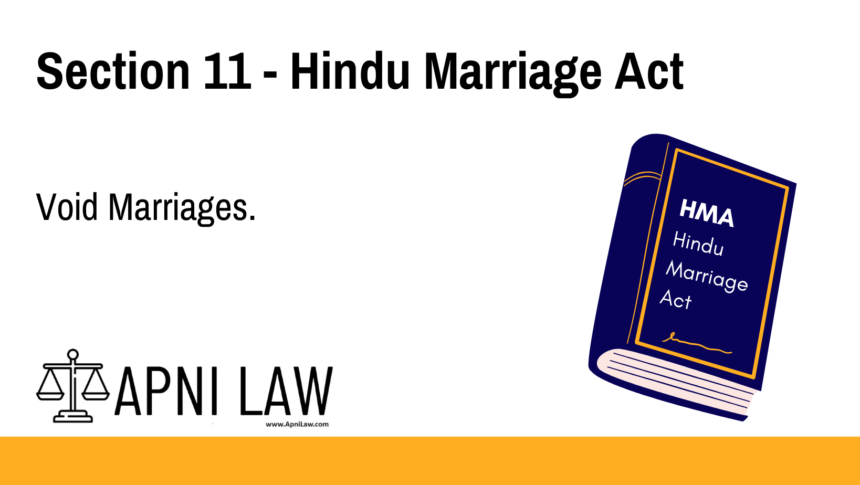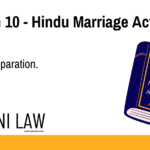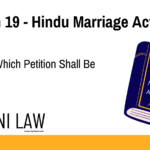Code: Section 11 – Hindu Marriage Act, 1955
“Any marriage solemnized after the commencement of this Act shall be null and void and may, on a petition presented by either party thereto [against the other party], be so declared by a decree of nullity if it contravenes any one of the conditions specified in clauses (i), (iv) and (v) of section 5.”
Related: Section 5 – Hindu Marriage Act: Conditions for a Valid Hindu Marriage
Explanation of Section 11 – Void Marriages
Section 11 of the Hindu Marriage Act, 1955, renders certain marriages void from the beginning (void ab initio). These are marriages that violate specific mandatory conditions under Section 5 of the Act:
- Clause (i): Bigamy – Either party has a living spouse at the time of the marriage.
- Clause (iv): Parties are within the degrees of prohibited relationship (unless allowed by custom).
- Clause (v): Parties are sapindas (close blood relatives) of each other (unless custom permits such a marriage).
If any of these conditions are violated, the marriage is considered invalid. Either spouse may file a petition in court to have the marriage declared void. If the court finds merit in the petition, it can issue a decree of nullity.
Key Highlights
- Applicable only to marriages solemnized after the Hindu Marriage Act, 1955 came into force.
- Either party to the marriage can initiate the petition.
- The marriage is treated as if it never legally existed once a decree of nullity is granted.
- Only applies to contravention of Section 5 clauses (i), (iv), and (v).
Illustration
Example 1: Bigamous Marriage
A man marries a second woman while his first wife is still alive and the marriage has not been legally dissolved. This violates Section 5(i) and renders the second marriage void under Section 11. Either party may seek a decree of nullity from the court.
Example 2: Marriage Within Prohibited Relationship
Two individuals related as first cousins marry without the existence of any applicable custom allowing such a relationship. This violates Section 5(iv), making the marriage void under Section 11.
Common Questions and Answers on Section 11
1. What is a void marriage under the Hindu Marriage Act?
A void marriage is one that has no legal validity from the outset. It is treated as if it never took place and creates no legal rights or obligations between the parties.
2. Who can file for nullity under Section 11?
Either party to the void marriage may file a petition in a family court for a decree declaring the marriage null and void.
3. What is the difference between void and voidable marriages?
Void marriages are automatically invalid by law. Voidable marriages are valid until they are annulled by a court decree based on specific grounds.
4. Are children from a void marriage legitimate?
Yes. Under Section 16 of the Hindu Marriage Act, children born from a void or voidable marriage are considered legitimate and have legal rights.
5. Does Section 11 apply to all violations of Section 5?
No. Section 11 applies only when the marriage violates clauses (i), (iv), and (v) of Section 5.
Conclusion
Section 11 of the Hindu Marriage Act, 1955, ensures legal clarity by allowing courts to declare marriages void when they breach essential marital conditions such as monogamy and familial relations. It provides protection for individuals and clarifies the status of children born from such unions. This section plays a vital role in upholding the integrity of matrimonial law under the Hindu legal system.
For more detailed insights into family law and marriage-related legal remedies, visit ApniLaw.








